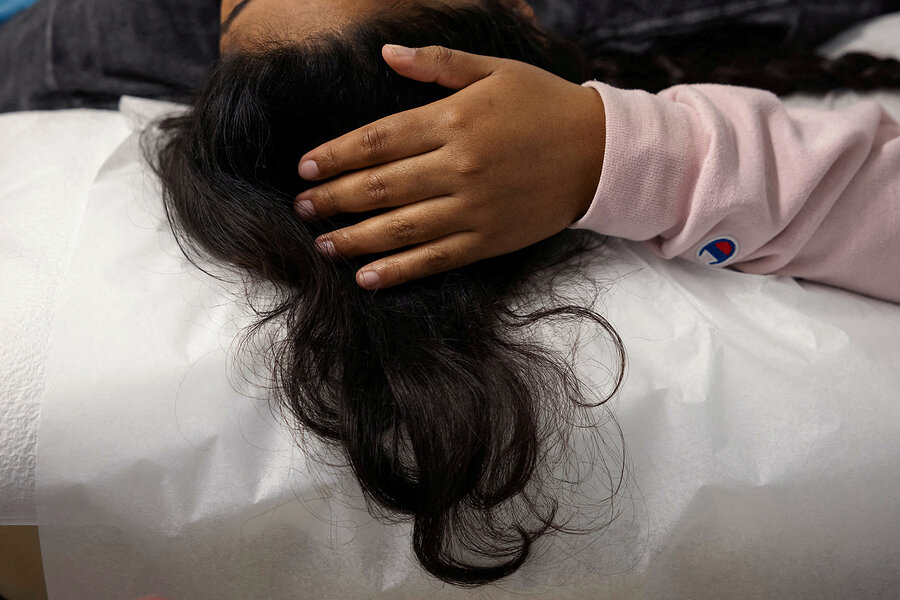Two years after the United States Supreme Court overturned Roe v. Wade, more Americans support abortion rights, according to recent surveys.
In Gallup polling over half of Americans, 54%, now identify as “pro-choice.” That number had only edged above 50% once in the two decades prior to the court’s 2022 decision on Dobbs v. Jackson Women’s Health Organization.
That ruling, leaked in May of 2022 and made official June, upended the country’s abortion landscape by returning abortion regulation to the states. The end of a constitutionally protected right to abortion accentuated political divides – seen in a subsequent flurry of state lawmaking.
Why We Wrote This
With the Dobbs ruling that overturned Roe v. Wade, more Americans now identify as supporting abortion rights, which could affect elections. Yet tensions over the issue remain, both among states and within them.
The shift has emboldened lawmakers in some conservative states, like Idaho and Louisiana, to implement near-total bans on abortion, while those in other states, like California, have codified abortion protections.
A number of states have meanwhile implemented shield laws that welcome abortion seekers from more-restrictive states. The result is a policy patchwork for Americans that is often confusing and still changing.
“It’s just a very different world for people seeking care depending on what state they live in,” explains Cathren Cohen, staff attorney with the UCLA Law Center on Reproductive Health, Law, and Policy.
SOURCE:
Guttmacher Institute
|
Karen Norris/Staff
There have been some counterintuitive shifts as well.
Despite swelling restrictions, the number of clinically administered abortions went up slightly in the 18 months following Dobbs – from an average of 82,000 abortions per month to 86,000, according to data tracked by the Society of Family Planning. Contributing to the uptick, say experts, is the growth of telehealth and medication abortions. There also may be increases in self-managed medication abortions that occur outside the formal health care system, according to the Guttmacher Institute.
The state policy standoff is growing deeper. A recent New York Times tracker shows that 14 states, including Arkansas, Idaho, North Dakota, and Texas, have enacted near-total abortion bans since the Dobbs decision. Three more states – Florida, Georgia, and South Carolina – now limit abortions to six weeks of pregnancy. Nebraska and North Carolina ban abortions after 12 weeks.
Amanda Andrade-Rhoades/Reuters
Anti-abortion demonstrators rally outside the U.S. Supreme Court as justices issue orders in pending appeals in Washington, June 21, 2024.
Other states have stepped up abortion access protections, but mostly with some limits like fetal viability or 24 weeks of pregnancy. California, Michigan, Vermont, and Ohio enshrine abortion rights in their state constitutions.
“Before Dobbs, the [Supreme] Court ruled the abortion issue,” says Clarke Forsythe, senior counsel for Americans United for Life. “With Dobbs, public sentiment controls the abortion issue, and public sentiment is different state by state.”
That sentiment is not only varies by state but is nuanced nationwide.
In its most recent survey last month, independent pollster Gallup finds 35% of Americans say abortion should be legal under all circumstances while 12% say abortion should be illegal no matter what. But nearly half hold in-between views, with 16% saying abortion is OK in most circumstances, and 33% saying only in a few circumstances.
Attitudes are also shifting over time. In Gallup’s tracking, public support for a total ban had been almost twice as high (23%) in 2009.
Issue 1 supporters celebrate at a watch party, Nov. 7, 2023, in Columbus Ohio. Ohio voters approved a constitutional amendment that guarantees the right to abortion and other forms of reproductive health care.
The breakdown of opinions by trimester shows that concerns shift with fetal development: 69% of Americans say abortion should be legal in the first trimester of pregnancy – generally about 12 weeks. In the second trimester, 55% oppose legal abortion, and opposition rises to 70% for the third trimester.
Bans have had the intended effect in states that implemented them: Abortions came to a halt in the most restrictive states. Those states also saw a bump in fertility rates – on average 2.3% – while the nation saw fertility rates decline.
>>> Read full article>>>
Copyright for syndicated content belongs to the linked Source : The Christian Science Monitor – https://www.csmonitor.com/USA/Society/2024/0624/dobbs-roe-abortion-rights-health?icid=rss
